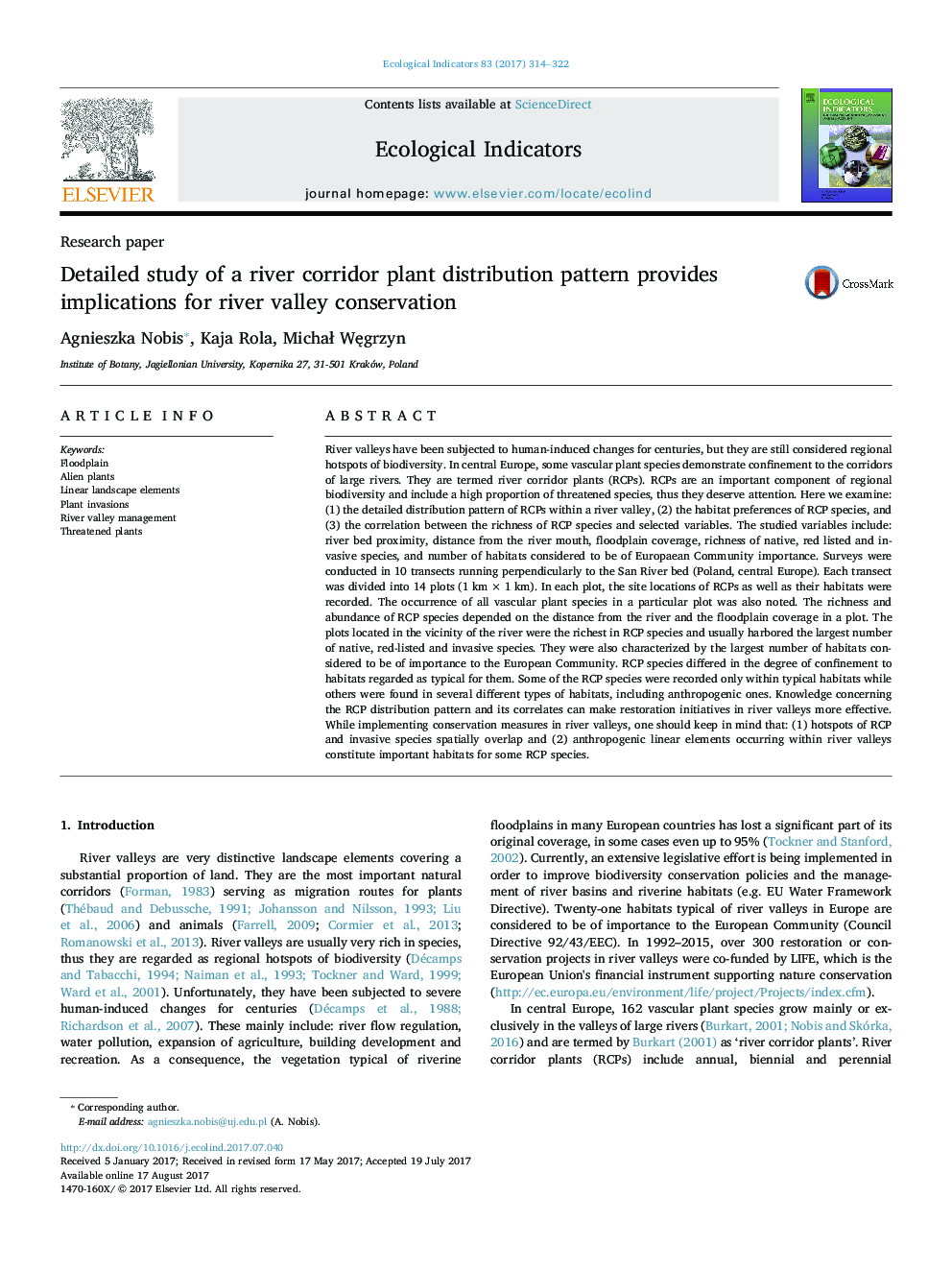| Article ID | Journal | Published Year | Pages | File Type |
|---|---|---|---|---|
| 5741501 | Ecological Indicators | 2017 | 9 Pages |
â¢Richness of river corridor plants (RCPs) decreases with distance from a river.â¢Hotspots of RCPs and invasive species spatially overlap.â¢RCP species differ in a degree of confinement to habitats regarded as typical for them.â¢Anthropogenic linear elements found in river valleys are important habitats for RCPs.
River valleys have been subjected to human-induced changes for centuries, but they are still considered regional hotspots of biodiversity. In central Europe, some vascular plant species demonstrate confinement to the corridors of large rivers. They are termed river corridor plants (RCPs). RCPs are an important component of regional biodiversity and include a high proportion of threatened species, thus they deserve attention. Here we examine: (1) the detailed distribution pattern of RCPs within a river valley, (2) the habitat preferences of RCP species, and (3) the correlation between the richness of RCP species and selected variables. The studied variables include: river bed proximity, distance from the river mouth, floodplain coverage, richness of native, red listed and invasive species, and number of habitats considered to be of Europaean Community importance. Surveys were conducted in 10 transects running perpendicularly to the San River bed (Poland, central Europe). Each transect was divided into 14 plots (1 km Ã 1 km). In each plot, the site locations of RCPs as well as their habitats were recorded. The occurrence of all vascular plant species in a particular plot was also noted. The richness and abundance of RCP species depended on the distance from the river and the floodplain coverage in a plot. The plots located in the vicinity of the river were the richest in RCP species and usually harbored the largest number of native, red-listed and invasive species. They were also characterized by the largest number of habitats considered to be of importance to the European Community. RCP species differed in the degree of confinement to habitats regarded as typical for them. Some of the RCP species were recorded only within typical habitats while others were found in several different types of habitats, including anthropogenic ones. Knowledge concerning the RCP distribution pattern and its correlates can make restoration initiatives in river valleys more effective. While implementing conservation measures in river valleys, one should keep in mind that: (1) hotspots of RCP and invasive species spatially overlap and (2) anthropogenic linear elements occurring within river valleys constitute important habitats for some RCP species.
